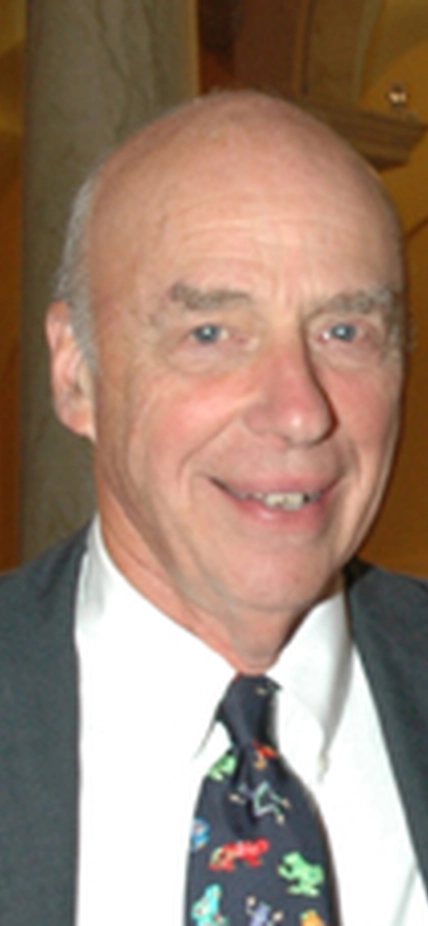Baltimore, MD—Director Emeritus Donald Brown, of Carnegie’s Department of Embryology, receives the prestigious 2012 Lasker-Koshland Special Achievement Award in Medical Science “For exceptional leadership and citizenship in biomedical science–exemplified by fundamental discoveries concerning the nature of genes; and by selfless commitment to young scientists.” Brown is honored along with Tom Maniatis of Columbia University.
Brown received his M.D. and M.S. in biochemistry from the University of Chicago Medical School in 1956. It was during medical school that he began to wonder how embryos develop. At the time, scientists had mapped out the process that produced anatomical features, but not the molecular underpinnings. Brown launched a bold, independent research program to study the details by looking at embryos that die particularly early—when new ribosomes, cellular protein factories, start accumulating. Brown, in collaboration with John Gurdon (Lasker Basic Medical Research Award, 2009), discerned that a structure called the nucleolus manufactures structural RNAs of the ribosome (ribosomal RNAs, or rRNAs).
Frog embryos do not make ribosomes during the first few days of development. Instead, they use the stockpile that the egg endowed to them. No one knew how a single cell could churn out so many protein-making factories. Brown and Igor Dawid (and, independently, Carnegie’s Joseph Gall, Lasker Special Achievement Award, 2006) showed that frog eggs create extra rRNA genes. The researchers revealed the first example of gene amplification, a process that underlies other processes, including the runaway growth of drug-resistant cancer cells.
Brown used the amplified genes to isolate and study rRNA genes, which later resulted in studying genes via recombinant DNA—a laboratory method that brings genetic material from various sources to produce sequences that are not found in nature. Brown used recombinant DNA to analyze an RNA called 5S RNA and he found a region in the middle of the gene that unexpectedly governs production of the gene’s RNA—the first known “internal control region.”
Today, Brown continues to study metamorphosis in frogs. Over the years he has made numerous fundamental discoveries concerning the nature of genes. He has also maintained a selfless commitment to young scientists by mentoring a generation of scientists at Carnegie and by founding and leading the Life Sciences Research Foundation (LSRF), a partnership that provides postdoctoral fellowships to some of the world’s most promising researchers. LSRF boasts 450 current fellows and alumni, many of whom have gone on to successful academic careers.
Allan Spradling, current Embryology director remarked: “Don Brown excels in everything that truly matters in science. He opened new frontiers of knowledge using novel approaches that paved the way for many others. He champions the highest intellectual and ethical standards, regardless of current fashion. His personal mentorship and Life Sciences Research Foundation nurture young scientists. Finally, Brown’s leadership as director is unmatched in the history of the Embryology Department.”
Brown joined Carnegie in in 1961 as a fellow. He later became a staff member and then he became director of the department in 1976 where he built a world-renowned program. When Brown left the directorship in 1994 to become a staff member again, five of the eight laboratory heads were members of the U.S. National Academy of Sciences (NAS). Two of the remaining three would later join NAS and one would win the Nobel Prize.
Carnegie president Richard Meserve remarked: “Don Brown epitomizes Andrew Carnegie’s original vision that by supporting exceptional individuals and letting them pursue their own research without constraints they will accomplish extraordinary science. The institution is proud of his scientific accomplishments and is grateful for his strong leadership, which has made the Department of Embryology a global success.”
Brown has had numerous honors over the years. He served as president of both the American Society for Cell Biology and the Society for Developmental Biology. He is a member of the National Academy of Sciences and the American Philosophical Society and he is a member of the American Academy of Arts and Sciences among other professional societies. He has served on numerous editorial boards and visiting committees. Among his many awards, he received the Louisa Gross Horwitz Award from Columbia University, the E.B. Wilson Award from the American Society of Cell Biology and the Lifetime Achievement Award for Developmental Biology from the Society of Developmental Biology.
__________________
Founded in 1942, The Albert and Mary Lasker Foundation fosters the prevention and treatment of disease and disabilities by honoring excellence in basic and clinical science, by educating the public, and by advocating for support of medical research. More details on the 2012Lasker Award recipients, the full citations for each award category, video interviews and photos of the awardees and additional information on the foundation are available at www.laskerfoundation.org.
